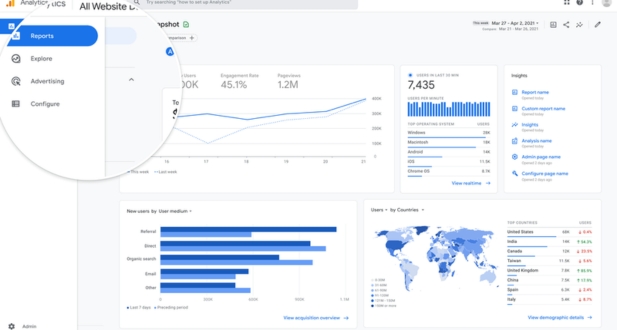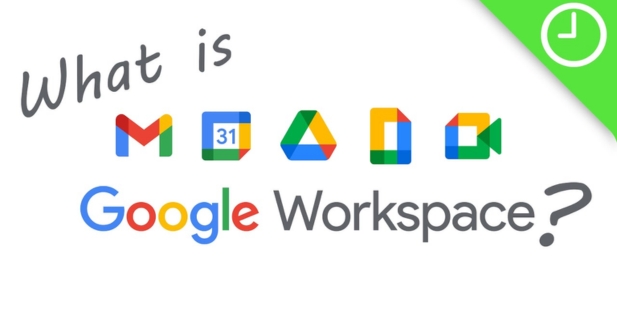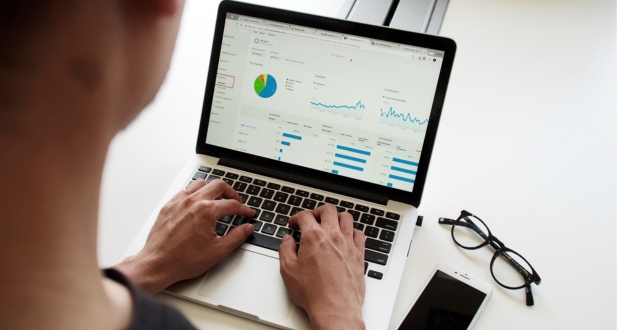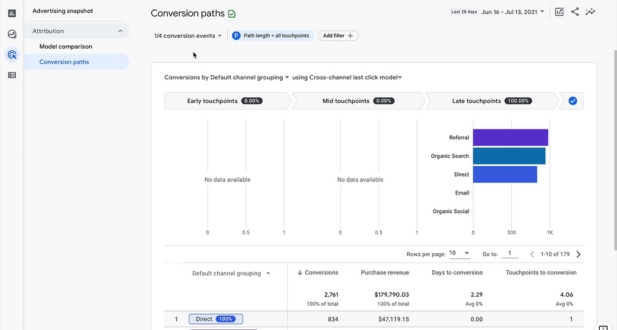In today’s fast-paced business environment, organizations rely on technology to streamline their operations and boost productivity. Google Workspace, formerly known as G Suite, is a popular choice for businesses looking to improve collaboration, communication, and document management. While Google Workspace provides a robust set of tools for these purposes, it’s essential to measure and analyze how these tools are being used to make informed decisions and optimize workflows. This is where Google Workspace Analytics and Reporting come into play.
We will explore the world of Google Workspace Analytics and Reporting, helping you understand their significance and how to leverage them for your organization’s success. We’ll delve into the various components, tools, and best practices to harness the full potential of your Google Workspace suite.
Understanding Google Workspace
Google Workspace, formerly known as G Suite, is a comprehensive cloud-based productivity and collaboration platform developed by Google for businesses, educational institutions, and organizations. It is designed to enhance productivity, communication, and collaboration among team members while providing secure and efficient access to a wide range of digital tools and services. Here are some key components and features of Google Workspace:
Gmail: Google Workspace includes Gmail, a widely used email client, which provides a professional email address with your organization’s domain. Gmail offers powerful features like email filtering, labeling, and integration with other Google apps.
- Google Drive: Google Drive is a cloud storage service that allows users to store, sync, and share files and documents. It’s a central repository for all your work-related files, and it offers ample storage space for your data.
- Google Docs: Google Docs is a web-based word processing application that allows multiple users to collaboratively edit and create documents in real time. It offers features for formatting, document sharing, and commenting.
- Google Sheets: Google Sheets is a web-based spreadsheet application similar to Microsoft Excel. It enables users to create and edit spreadsheets collaboratively, perform data analysis, and visualize data through charts and graphs.
- Google Slides: Google Slides is a presentation software that lets you create and share slideshows for meetings, pitches, or educational purposes. It also supports real-time collaboration and synchronization.
- Google Calendar: Google Calendar is a scheduling and time management tool that enables users to create events, set reminders, and share schedules with colleagues. It can be integrated with Gmail and other Google apps for seamless scheduling.
- Google Meet: Google Meet is a video conferencing platform that facilitates virtual meetings, webinars, and screen sharing. It allows for both one-on-one and group video calls, making it an essential tool for remote work and communication.
- Google Chat: Google Chat provides real-time messaging and team collaboration. It allows for direct messaging, group conversations, and integration with other Google Workspace apps.
- Google Forms: Google Forms lets you create surveys, quizzes, and data collection forms. The collected data is automatically stored in Google Sheets for analysis.
- Google Sites: Google Sites enables users to create and customize websites within the Google Workspace environment. It’s a useful tool for creating internal websites or project-specific sites.
- Admin Console: The Google Workspace Admin Console provides administrators with control over user accounts, security settings, and app management. It allows administrators to tailor Google Workspace to their organization’s specific needs.
- Security and Compliance: Google Workspace offers robust security features, such as data encryption, two-factor authentication, and advanced threat detection. It also helps organizations comply with data protection regulations like GDPR.
- Mobile Apps: Google Workspace apps are accessible on mobile devices, ensuring that users can work from anywhere.
- Integration: Google Workspace integrates seamlessly with third-party applications, making it a flexible and extensible platform for businesses.
Google Workspace offers a powerful and versatile suite of tools that foster collaboration, streamline communication, and improve productivity within organizations. Its cloud-based nature ensures that data is accessible from anywhere, making it particularly suitable for remote and distributed teams. Understanding the capabilities of Google Workspace is crucial for making the most of this comprehensive platform in a business or organizational context.
The Importance of Analytics and Reporting
The Importance of Analytics and Reporting in the context of Google Workspace, or any similar productivity suite, cannot be overstated in today’s business landscape. Here’s a deeper dive into why these analytics and reports are crucial:
Performance Evaluation: Analytics and reporting provide a comprehensive view of how your organization is making use of Google Workspace’s various tools. This data enables you to evaluate the performance of these tools. You can identify which applications are being heavily used and which ones are less utilized. By understanding this, you can make informed decisions on where to allocate resources, prioritize updates, and ensure that the suite aligns with your business needs.
User Adoption: Tracking user adoption is essential to measure how well your employees are embracing Google Workspace. It’s not just about implementing the suite; it’s about ensuring that your team is effectively using it. Analytics and reporting can reveal which teams or individuals might need more training or support.
-
Efficiency Improvement: Analytics can uncover inefficiencies and bottlenecks in your workflows. For example, you might discover that certain processes take longer than they should due to underutilization of specific features. With this knowledge, you can optimize processes, streamline workflows, and ultimately save both time and resources. This not only boosts productivity but can also enhance the overall employee experience.
-
Cost Management: Understanding usage patterns through analytics helps you manage licenses more efficiently. You can identify inactive users, reallocate licenses as needed, or make strategic decisions regarding the number of licenses required. This optimization can potentially lead to cost reductions, which is especially important for organizations aiming to maintain budget control while maximizing the benefits of their Google Workspace investment.
-
Security and Compliance: In addition to the mentioned benefits, analytics and reporting can also play a crucial role in security and compliance. They allow you to monitor user activity, detect anomalies, and ensure that sensitive data is handled appropriately. This helps in maintaining a secure and compliant digital workspace, which is essential in today’s business environment where data breaches and regulatory requirements are of great concern.
-
Data-Driven Decision Making: Ultimately, analytics and reporting empower your organization to make data-driven decisions. Instead of relying on assumptions, you can base your strategies on concrete insights, leading to more effective, informed, and successful operations.
Analytics and reporting are essential tools for organizations using Google Workspace or any similar platform. They not only provide a deep understanding of how the suite is being used but also offer valuable insights for performance optimization, user adoption, efficiency improvements, cost management, security, and compliance. By harnessing this data, businesses can better adapt to the ever-changing demands of the modern business landscape and stay competitive.
Google Workspace Analytics
Google Workspace Analytics offers a comprehensive understanding of how your organization utilizes its digital tools. It’s like having a detailed map of user behaviors, application usage, collaboration patterns, and security practices within your Google Workspace environment. Here’s a deeper dive into each aspect:
User Activity:
This aspect involves keeping tabs on individual users’ actions, like how many emails they send, documents they create, or meetings they schedule. By tracking these activities, you can spot outliers—those who use the tools extensively or might need additional guidance. It’s a fantastic way to gauge user engagement and identify areas where more training might be necessary.
Application Usage:
Understanding which Google Workspace applications are most frequently used and by whom is crucial for optimization. It helps identify the tools integral to your organization’s workflows. For instance, if most of your team heavily relies on Google Docs but barely uses Google Sheets, it might signal the need for more training on spreadsheet tools or a deeper exploration of why Docs are preferred over Sheets.
Collaboration Metrics:
This is about measuring how effectively teams collaborate. Metrics on shared documents, comments, and edits reflect the degree of teamwork and the efficiency of these collaborative efforts. For instance, you might notice certain teams excel in collaborative projects, while others might need support or specific tools to enhance their teamwork.
Data Security:
Tracking file sharing settings and the movement of sensitive information ensures a proactive approach to data security. It helps in recognizing potential vulnerabilities and monitoring the flow of critical data within the organization. For instance, sudden or unauthorized access to sensitive files can be flagged for immediate action, enhancing the overall security posture.
By leveraging these analytics, organizations can make informed decisions regarding training, resource allocation, and security measures to enhance productivity, streamline workflows, and fortify data protection. It’s a powerful tool for optimizing the use of Google Workspace while maintaining security and fostering collaboration.
Tools for Google Workspace Analytics
Google Admin Console: This is the primary interface for administrators to manage their Google Workspace domain. Within the Admin Console, you can access various reports and settings that allow you to oversee and optimize your organization’s Google Workspace usage. Some key features of the Admin Console include:
- User Management: You can create, delete, or modify user accounts and groups, which can be essential for ensuring that users have access to the tools they need while maintaining security and compliance.
- Security Settings: Manage security policies, including password requirements, 2-step verification, and device management. These settings play a crucial role in maintaining the overall security of your organization’s Google Workspace environment.
- Reports: The Admin Console provides a range of reports, including user activity, login details, and device usage. These reports offer insights into how your organization is utilizing Google Workspace, helping you identify trends and potential issues.
Google Workspace Reports: This tool goes hand in hand with the Admin Console, offering in-depth data and analytics on various aspects of your organization’s Google Workspace usage. Some key features of Google Workspace Reports include:
- User Activity Report: It provides information on user logins, email usage, file sharing, and collaboration. You can track how individual users are engaging with the platform.
- Application Usage Report: This report helps you identify which Google Workspace applications are being used most frequently and by whom. This information is invaluable for optimizing your licensing and training efforts.
- Email Traffic Report: Analyze email traffic patterns, including message volume, email senders, and recipients. This can be useful for monitoring email communication and identifying trends.
Google Vault: Google Vault is a specialized tool for data retention, archiving, and eDiscovery. Key features of Google Vault include:
eDiscovery: It allows you to search, preserve, and export emails and documents for legal and compliance purposes. This is especially crucial for organizations with strict regulatory and legal requirements.
- Data Retention: You can set policies to retain specific data for a specified period, ensuring compliance with data retention laws and internal policies.
- Audit Trails: Google Vault maintains an audit trail of data access and actions, which can be useful for tracking who has accessed sensitive information.
Google Workspace for Education: For educational institutions, Google Workspace for Education provides additional analytics tools tailored to the unique needs of schools and universities. Some of the analytics and reporting features include:
- Classroom Performance Metrics: Monitor student engagement, teacher activity, and classroom performance to enhance the digital learning experience.
- Digital Learning Analytics: Gather insights into how students and educators are using Google Workspace tools for learning, allowing you to make data-driven improvements in your education environment.
Google Workspace Reporting
While analytics focus on data analysis, reporting is about presenting that data in a meaningful and actionable way. Google Workspace Reporting involves creating and sharing reports based on the insights gathered from analytics. Here are some important aspects of Google Workspace Reporting:
Google Workspace Reporting is an essential aspect of data management and decision-making within an organization. It goes beyond collecting and analyzing data, as it involves presenting this information in a way that makes it understandable, actionable, and accessible to the right people. Here’s more on Google Workspace Reporting:
Custom Reports:
Customization is a key feature of Google Workspace Reporting. It allows you to create reports that address the specific needs and objectives of your organization. For instance, you can design reports to monitor the performance of different teams, track the progress of a specific project, or analyze trends in email communication.
Automated Reports:
Automation is a time-saving and efficiency-enhancing feature. With automated reports, you can schedule when and how often reports are generated. This ensures that you always have the most current data without the need for manual data collection or analysis. Automated reports can be set up to run daily, weekly, monthly, or according to a schedule that suits your organization’s requirements.
Data Visualization:
Data visualization is a powerful tool for conveying complex information in a simple and visually appealing way. Google Workspace provides tools for creating charts, graphs, and visual representations of your data. This makes it easier for stakeholders to quickly grasp key insights and trends, even if they aren’t data experts.
Sharing Reports:
Effective decision-making relies on the accessibility of information to the right people. With Google Workspace Reporting, you can easily share reports with relevant team members, decision-makers, and stakeholders. This ensures that everyone in your organization has access to the insights they need to make informed decisions and take appropriate actions.
Google Workspace Reporting is an integral part of the Google Workspace ecosystem. It allows organizations to create tailored reports, automate report generation, visualize data, and share insights with the appropriate stakeholders. This helps organizations make data-driven decisions and improve their overall efficiency and productivity.
Best Practices for Google Workspace Analytics and Reporting
Set Clear Objectives:
Before diving into Google Workspace Analytics, it’s crucial to define clear objectives and goals for what you want to achieve. Understand what specific insights are most relevant to your organization. For example, if you’re a sales team, you might want to track email outreach and document collaboration to improve sales strategies.
Regularly Review Data:
Data can quickly become outdated, and trends can change over time. Regularly review and analyze your data to identify trends, patterns, and areas for improvement. This continuous monitoring allows you to adapt and make data-driven decisions as your organization evolves.
Training and Education:
It’s essential to ensure that your employees are well-informed about the tools available and the importance of their usage. Provide training and education on using Google Workspace and understanding the insights provided by the analytics. This helps in promoting user adoption and the effective utilization of the tools.
Security and Compliance:
Pay close attention to data security and compliance when handling sensitive information within Google Workspace. Ensure that you’re using appropriate settings to protect sensitive data, comply with industry regulations, and manage access control. Google Vault, for example, can assist with data retention and compliance.
Collaboration and Cross-functional Teams:
Encourage collaboration among different teams within your organization. The insights gained from Google Workspace Analytics and Reporting can be beneficial across various aspects of your organization, from marketing to HR to IT. Sharing insights and best practices across teams can lead to more efficient and productive use of Google Workspace.
Incorporating these best practices into your approach to Google Workspace Analytics and Reporting will help you leverage the valuable data and insights provided by these tools to improve productivity, optimize resource allocation, and achieve your organizational goals.
Real-world Examples
Tech Startup Productivity Boost: A fast-growing tech startup used Google Workspace Analytics to monitor their employees’ email and application usage. They identified a group of power users who were extremely proficient in using Google Workspace tools. By analyzing their workflows, the company was able to develop best practices and share them with the entire team. This led to a significant increase in overall productivity as employees adopted more efficient ways of using Google Workspace applications.
Large Enterprise Collaboration Enhancement: A multinational corporation with multiple teams in different locations utilized Google Workspace Analytics to measure collaboration metrics. They found that certain teams were not effectively sharing documents or collaborating on projects. By identifying these gaps, they were able to provide targeted training and resources to these teams. As a result, collaboration improved, and projects were completed more efficiently.
Data Security in Healthcare: A healthcare organization handling sensitive patient data used Google Workspace Analytics to monitor data security. They tracked file sharing settings and user permissions, which helped them identify potential data breaches and ensure compliance with privacy regulations. This proactive approach to data security saved them from potential legal and financial consequences.
Education Institution Student Engagement: A university that had implemented Google Workspace for Education used its analytics tools to monitor student and teacher engagement. They tracked students’ participation in online classes, the use of digital learning materials, and teacher-student interactions. This data allowed them to optimize their teaching methods and improve the overall educational experience.
Non-profit Cost Savings: A non-profit organization with a limited budget leveraged Google Workspace Analytics to track application usage. By identifying which apps were essential to their operations and which were underutilized, they were able to reduce their licensining costs by discontinuing unnecessary subscriptions. This cost-saving approach allowed them to allocate more resources to their core mission.
These real-world examples illustrate how organizations across various sectors have harnessed Google Workspace Analytics to enhance productivity, improve collaboration, ensure data security, and achieve cost savings. By using data-driven insights, these organizations were able to make informed decisions and optimize their use of Google Workspace to meet their specific needs and goals.
The Future of Google Workspace Analytics and Reporting
The future of Google Workspace Analytics and Reporting holds the promise of even more advanced and insightful features to help organizations better understand their productivity and collaboration patterns. Some potential developments include:
Enhanced AI-Driven Insights: Google has been increasingly integrating artificial intelligence and machine learning into its products, and this trend is likely to continue in the context of Workspace Analytics. AI-driven insights could provide more personalized and actionable recommendations based on individual and team usage patterns. For example, the system might suggest more efficient collaboration strategies or highlight areas where additional training or resources are needed.
Predictive Analytics: Predictive analytics can help organizations anticipate future trends and needs. For Google Workspace, this could mean predicting email overload, storage capacity requirements, or identifying potential security vulnerabilities before they become a problem. By analyzing historical data and patterns, predictive analytics can proactively suggest actions to improve efficiency, security, and overall performance.
Deeper Integration with Third-Party Tools: Google Workspace may further integrate with third-party analytics and reporting tools, allowing organizations to leverage a broader range of data sources and customize their analytics experience. This could include more seamless integration with tools like Google Data Studio, Tableau, or other business intelligence platforms.
Improved Customization and Visualization: Future developments may offer more customization options, allowing organizations to define their own key performance indicators (KPIs) and create unique dashboards and visualizations. This would enable businesses to tailor their analytics to specific needs and industries.
Real-time Data and Collaboration Metrics: Google Workspace may continue to improve real-time data and collaboration metrics. Instantly accessible data could help organizations monitor and optimize their workflows, track progress on collaborative projects, and respond more quickly to issues as they arise.
Mobile Analytics: As remote work and mobile productivity become more prevalent, Google Workspace Analytics may offer enhanced insights into mobile app usage, user behavior on mobile devices, and the impact of mobile work on productivity.
Enhanced Data Security Analytics: As data security remains a top priority for organizations, Google Workspace may offer more advanced features for tracking and managing data security. This could include more detailed information on data access, sharing, and potential threats.
Industry-Specific Analytics: Google may develop industry-specific analytics solutions tailored to the unique needs of different sectors, such as healthcare, finance, education, or manufacturing.
It’s important to note that Google Workspace’s evolution depends on user feedback, technological advancements, and market demands. Therefore, the specific features and capabilities that become available in the future will depend on a variety of factors. Organizations using Google Workspace can expect ongoing enhancements to their analytics and reporting capabilities to support their evolving needs and business goals.
Conclusion
Analytics and Reporting are indispensable tools for organizations looking to maximize the potential of their Google Workspace suite. By understanding how your employees use the tools, you can improve productivity, optimize processes, and make data-driven decisions. With a firm grasp of best practices and the willingness to adapt, you can harness the power of data to drive your organization’s success in the digital age.
You can access Google Workspace Analytics and Reporting through the Google Workspace Admin console.
Google Workspace provides a wide range of reports, including user activity, device usage, application usage, and security reports.
Yes, you can create custom reports and dashboards using Google Data Studio or Apps Script to tailor analytics to your organization’s specific requirements.
Benefits include better insights into how your organization uses Google Workspace, improved security monitoring, and informed decision-making.
Google Workspace offers basic reporting features for free, but more advanced analytics and reporting features may require a paid subscription.
You can use the Gmail log search tool to track email usage, including email volume, delivery status, and sender/recipient information.
Yes, you can generate reports on user activity in Google Drive, such as file access, sharing, and collaboration.
You can identify suspicious activities, track security breaches, and gain insights into login and authentication patterns.
– You can create custom alerts based on specific events or conditions in the Admin console to get notified of important changes or anomalies.
– Yes, you can monitor mobile device usage, including devices that access your organization’s Google Workspace services.
– Yes, Google provides APIs that allow you to integrate and extract data from Google Workspace for custom reporting and analysis.
– You can export data to various formats, such as CSV or Google Sheets, for in-depth analysis using third-party tools or spreadsheet software.
– Google Workspace Reports primarily focus on application usage, while Google Cloud Identity reports track security and identity-related events.
– Yes, you can track and analyze the usage of third-party apps integrated with your Google Workspace environment.
– Yes, you can schedule automated reports to be generated and emailed at regular intervals.
– Analytics can help you identify and troubleshoot issues with service availability, user access, and performance.
– Yes, there are third-party tools and services that can provide additional analytics and reporting capabilities.
– Data in reports is typically updated at regular intervals, but the frequency can vary depending on the type of report.









